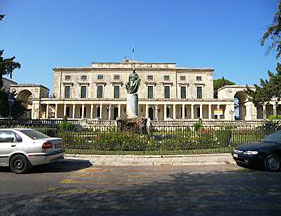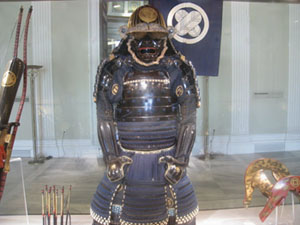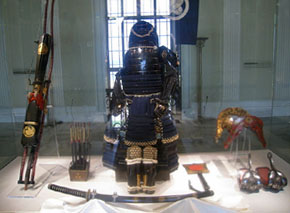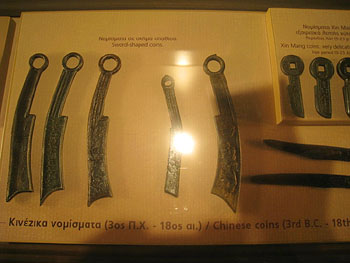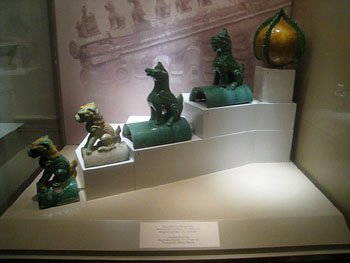 |
||||
|
Kerkyra's Eastern Treasure by Catherine Tsounis |
||||
| You will not believe this,” said a recent visitor to Kerkyra (Corfu). “There is a Museum of Asian art on the island.” The Museum of Asian Art at the Palace of Sts. Michael and George is the only such collection in Greece. Grigorios Manos, a collector of Asian art, donated his collection to the Greek State in 1919. The museum in the Palace of Sts. Michael and George was created in Kerkyra in 1927. Mr. Manos donated 9,500 Art works. He became the museum’s first Director in 1927. N. Chatzivasiliou donated 450 art works in 1974. Ch. Chiotakis donated 341 from his collection in the 1980’s. Diplomats Giannis Kollas, I. Siniossoglou and Petros Almanahos left their collections. |
||||
|
||||
| Another impressive section is of samurai armors from the Han dynasty 206-202 A.D. Other interesting exhibits include: masks from the Japanese theater NO from the Edo period (1615-1868), the wooden masks of the Japanese Kitagava Utamaro (1753-1806), the Chinese porcelain of the “green team” from the Kangsi period (1662-1722), the bronze vases from the Sang Dynasty (130-1028 A.D.), the Greek-Buddhist sculptures of Gaddara (2nd century A.D.) the Chinese statuettes of Tang (7th-8th century A.D.), the Chinese objects of jade (dynasty Tsing 1644-1912) and Indian wooden sculptures of the 17th and 19th centuries. Visit the Museum in the Palace of Saints Michael and George in Spianada, Corfu town. The telephone is 26610-30443/20193. |
||||
|
||||
|
||||
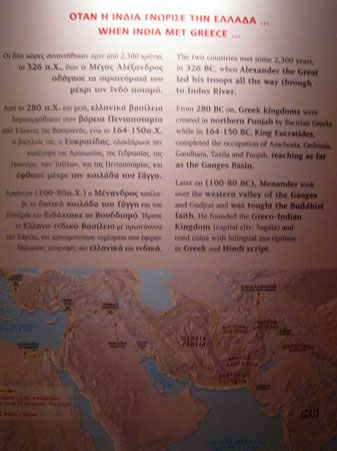 “When India met Greece” map and inscription. Photo by Despina Siolas, M.D., Ph.D. |
||||
|
(Posting date 24 October 2011) HCS encourages readers to view other fine articles ( http://www.helleniccomserve.com/archivetsounis.html ) penned by Dr. Catherine Tsounis and press releases about the Modern Greek Studies program at St. John's University, where she is an adjunct professor. For more information about Dr. Tsounis, see her biographical sketch at http://www.helleniccomserve.com/biotsouniscatherine.html Browse our permanent, extensive archives at the URL http://www.helleniccomserve.com/contents.html. |
||||
|
||||
|
2000 © Hellenic Communication Service, L.L.C. All Rights Reserved.
http://www.HellenicComServe.com |
||||
